Today’s Current Affairs: 25th Jan 2024 for UPSC IAS exams, State PSC exams, SSC CGL, State SSC, RRB, Railways, Banking Exam & IBPS, etc
Table of Contents
Mpemba Effect : Study

The Mpemba effect continues to captivate scientists with its complex interplay of physical mechanisms.
- Mpemba effect is named after Tanzanian student Erasto Mpemba, who brought attention to this counterintuitive phenomenon in 1969, making for curious observations.
- The effect is that hot water can freeze faster than cold water in similar conditions.
- While Aristotle, Francis Bacon, and René Descartes had noticed the effect centuries earlier, the Mpemba effect caught scientists’ attention only more recently.
- Researchers have conducted numerous experiments to determine the causes of this confusing phenomenon, but a consensus conclusion remains wanting.
- One cause, they have posited, is microbubbles left suspended in water that has been heated by boiling.
- These cavities promote convection and transfer heat faster as the water cools.
- Evaporation: as warmer water evaporates more, it also takes away some heat (evaporation is inherently endothermic, which is how sweat cools your skin). Both convection and accelerated heat transfer are enhanced in warmer water because such water is less dense.
- Yet another factor could be the presence of frost in cold water. Frost is an insulator and could slow the loss of heat.
- Scientists have also considered whether compounds in water like calcium carbonate could be precipitated by boiling, and then dissolve, thus increasing the water’s freezing point.
Karpoori Thakur : Bharat Ratna Posthumously
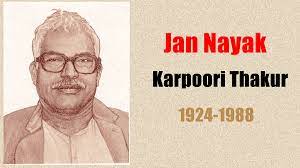
Karpoori Thakur, a prominent Gandhian socialist leader and former Bihar chief minister will be awarded the ‘Bharat Ratna’ posthumously.
- Bharat Ratna is the highest civilian Award of the country which was instituted in the year 1954.
- Any person without distinction of race, occupation, position or sex is eligible for these awards.
- Though usually conferred on India-born citizens, the Bharat Ratna has been awarded to one naturalised citizen, Mother Teresa, and to two non-Indians, Pakistan national Khan Abdul Ghaffar Khan and former South African President Nelson Mandela.
- The original statutes did not provide for posthumous awards but were amended in 1955 to permit them. Former Prime Minister Lal Bahadur Shastri became the first individual to be honoured posthumously.
- It is awarded in recognition of exceptional service/performance of the highest order in any field of human endeavour.
- The recommendations for Bharat Ratna are made by the Prime Minister himself to the President and no formal recommendations for this are necessary.
- The number of annual awards is restricted to a maximum of three in a particular year.
- On conferment of the award, the recipient receives a Sanad (certificate) signed by the President and a medallion.
- The award does not carry any monetary grant.
Lake Retba:
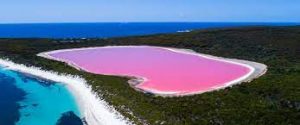
The Lake Retba’s waters are virtually devoid of life and are on the verge of disappearing due to pollution and mining.
- Lake Retba is also known as Lac Rose the Pink Lake.
- It is located north of the Cap Vert peninsula of Senegal, northeast of Dakar
- The lake is isolated from the sea by sand dunes.
- Its fresh water comes from the seasonal water table in the dunes, which are higher than the lake.
- Thus, the sea provides most of the lake’s water and all of its salt.
- The Pink Lake is one of the main tourist destinations in the Dakar region, primarily because of the pink colour of its waters.
- The pink coloration is due to the proliferation of halophilic green algae (living in a salty environment), Dunaliella salina, which contain red pigments.
- The algae is associated with halophilic bacteria of the genus Halobacterium.
Design-Linked Incentive Scheme:
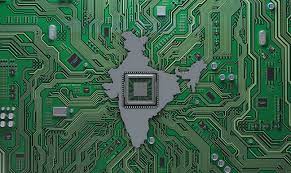
Since announcement, the Design-Linked Incentive scheme (DLI) scheme has approved only seven start-ups, markedly short of its target of supporting 100 over five years.
- Design-Linked Incentive scheme aims to offer financial incentives as well as design infrastructure support across various stages of development and deployment of semiconductor design(s) for Integrated Circuits (ICs), Chipsets, System on Chips (SoCs), Systems & IP Cores and semiconductor linked design(s) over a period of 5 years.
- Objectives is Nurturing and facilitating the growth of domestic companies, startups and MSMEs.
- Achieving significant indigenization in semiconductor content and IPs involved in the electronic products deployed in the country, thereby facilitating import substitution and value addition in the electronics sector.
- Strengthening and facilitating access to semiconductor design infrastructure for the startups and MSMEs.
- The scheme shall initially be for three (3) years from 01-01-2022.
National Monetization Pipeline:
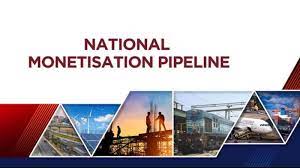
The Centre has decided to conduct an Asset Recycling Drive under the National Monetization Pipeline (NMP), aiming to generate resources for new investments in infrastructure.
- The Centre’s asset recycling drive is expected to generate around Rs 1.5 trillion in the fiscal year 2024-25.
- Transactions with monetisation values of around Rs 0.97 trillion were completed in 2021-22, and Rs 1.32 trillion in 2022-23.
- National Monetisation Pipeline (NMP) envisages an aggregate monetisation potential of Rs 6-lakh crore through the leasing of core assets of the Central government in sectors such as roads, railways, power, oil and gas pipelines, telecom, civil aviation etc, over a four-year period (FY 2022-25).
- The Monetization through NMP only includes core assets, excluding monetization through disinvestment of non-core assets.
- Currently, only assets of central government line ministries and CPSEs in infrastructure sectors have been included.
- The government is currently in the process of coordinating and collating asset pipelines from states to expand the scope of the NMP, incorporating assets at both the central and state levels in due course.
- To streamline the process, the monetization of non-core assets, including land, real estate, and infrastructure, is being transferred from the Department of Investment and Public Asset Management (DIPAM) to the Department of Public Enterprises (DPE) within the Ministry of Finance.
- This pipeline is intended to support investments under the National Infrastructure Pipeline (NIP) worth Rs 111 trillion in six years through FY25.
- The timeline for the NMP has been strategically set to be co-terminus with the remaining period under the National Infrastructure Pipeline (NIP).
Homi J Bhabha Death Anniversary:
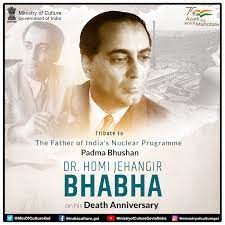
Homi Jehangir Bhabha (born 30th October 1909, Mumbai, India) and died on 24th January, 1966 was a pioneering Indian physicist.
- He is regarded as the father of India’s nuclear programme. He saw the importance of nuclear power as a military deterrent and source of energy, and laid the foundation of India’s nuclear establishment.
- He founded and directed two of the institutions that would bring India into the nuclear age: the Tata Institute of Fundamental Research (TIFR) and the Atomic Energy Establishment, Trombay, later renamed the Bhabha Atomic Research Centre (BARC) in his honour.
- India’s three-stage nuclear power programme was formulated by Homi Bhabha in the 1950s.
- Bhabha was the first Indian to receive the Adams Prize in 1942, the highest honour given by the University of Cambridge.
- Bhabha received the award for his “theory of the elementary particles and their interactions”.
- He was also awarded the Padma Bhushan.
Light Emitting Diodes (LED):
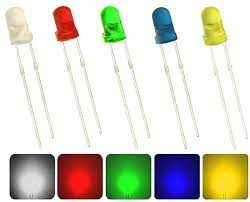
The Royal Swedish Academy of Sciences made a statement declaring that while incandescent light bulbs illuminated the 20th century, the 21st century would be illuminated by LED lamps.
- A diode is an electronic component about 5 mm wide. It has two points of contact, or terminals, called its anode and cathode.
- A diode’s primary purpose is to allow current to flow in only one direction.
- It achieves this using a P-N Junction Diode.
- The P-N junction occurs at the interface of p-type and n-type semiconductors.
- The positive side of the semiconductor, known as the p-side, possesses an abundance of holes.
- The negative side of the semiconductor, referred to as the n-side, contains an excess of electrons.
- Electrons are ‘places’ inside atoms that carry negative charge.
Light Emitting Diodes (LED):
- LEDs are semiconductors that can emit light when an electric current passes through them.
- Inside the diode’s p-n junction, the electrons have more energy than the holes.
- When an electron meets and occupies a hole, it releases energy into its surroundings.
- The Nobel Prize in Physics for 2014 was granted to Isamu Akasaki, Hiroshi Amano and Shuji Nakamura.
- Their achievement was recognized for the invention of efficient blue light-emitting diodes, a breakthrough that paved the way for the creation of bright and energy-efficient white light sources.
- Red and green diodes existed for a while, but the lack of blue light prevented the creation of white lamps.
National Girl Child Day 2024:

National Girl Child Day (NGCD) is observed on 24th January every year to shed light on the challenges faced by girls in Indian society.
- The day focuses on creating awareness about the inequalities girls encounter and advocates for equal opportunities in education, healthcare, and nutrition.
- NGCD was established by the Ministry of Women and Child Development in 2008.
- The initiative acknowledges the unique challenges faced by girls, including child marriage, and gender-based violence.
- NGCD commemorates the inaugural anniversary of Beti Bachao, Beti Padhao Scheme (Save the Girl Child, Educate the Girl Child) launched on January 22, 2015.
Srirangam Temple: Prime Minister Visit
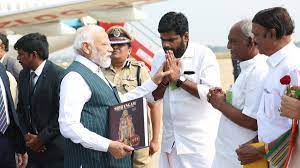
The Prime Minister visited Srirangam Sri Ranganathaswamy Temple, marking the first visit by a serving Prime Minister to the temple, according to temple priests.
- Sri Ranganatha Swamy Temple, also known as Srirangam Temple, is a Hindu temple in Srirangam, Tiruchirapalli, Tamil Nadu, India.
- It is dedicated to Ranganatha, a form of Vishnu.
- The temple is considered the first and most important of the 108 main Vishnu temples.
- It is constructed in Dravidian style and temple Complex has 21 sculpted Gopurams, 50 sub-shrines, and 9 sacred pools (tanks).
- Situated on island of Srirangam bounded by Cauvery and Kollidam (tributary of Cauvery) Rivers.
Pradhanmantri Suryoday Yojana:

PM Modi announced the launch of Pradhanmantri Suryoday Yojana .
- Currently, there is no centrally compiled estimate of the number of households in India with rooftop solar installations.
- Pradhanmantri Suryoday Yojana launched on January,2024.
- Objectives is to
- Provide affordable solar energy.
- Increase energy independence
- Promote environmental sustainability.
- It will provide incentives and financial assistance to make it affordable for residential consumers to adopt rooftop solar.
- This scheme comes after India missed its initial target of 40 gigawatts of rooftop solar capacity by 2022 under the existing Rooftop Solar Programme.
- The new scheme signals renewed impetus to achieve the target of 40GW capacity by the extended deadline of 2026.
- With only around 11GW currently installed, the Pradhan Mantri Suryodaya Yojana intends to accelerate rooftop solar adoption.
- The scheme aimed to expand India’s rooftop solar installed capacity in the residential sector by providing Central Financial Assistance and incentives to DISCOMs
- A consumer can avail of the benefits of the scheme through DISCOM tendered projects or through the National Portal
- The DISCOM’s role is limited to issuing of technical feasibility approval, installation of the net meter and inspect the system.
- Net metering is a billing mechanism that credits solar energy system owners for the electricity they add to the grid.
- Surplus solar power units generated from the rooftop solar plant can be exported to the grid.




